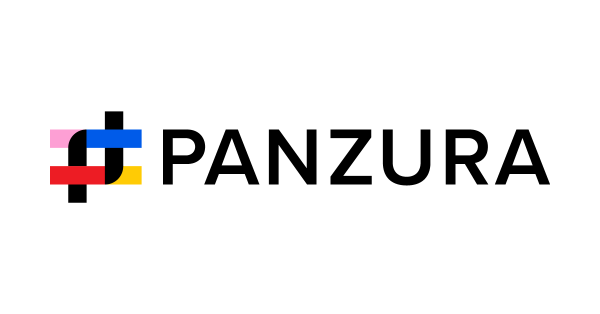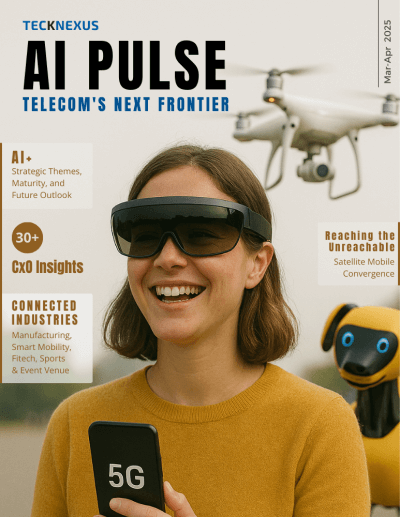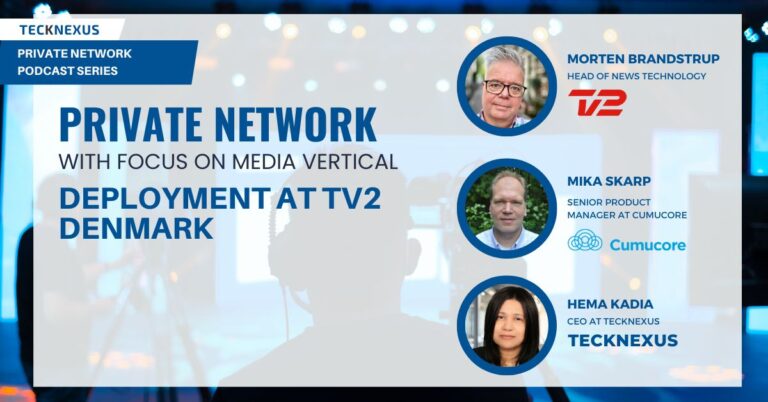Prioritize the user journey or risk stagnation in the tech race
In an era dominated by the advent of Artificial Intelligence (AI), the rise of 5G, and the pervasive influence of the Internet of Things (IoT), a critical question – and one which is often overlooked -emerges. Where does the customer stand in this evolving landscape?
From blockchain’s evolution to personalised healthcare and smart manufacturing – AI and the interconnected promises of IoT ushes in new possibilities. However, amid this evolution the customer experience often remains overlooked.
In the rush to adopt cutting-edge technologies, businesses risk creating a widening gap between their technological investments and the actual needs and expectations of their customers. While innovative tools and platforms can enhance operations and offer new opportunities, there is a danger that the focus on the latest trends can overshadow a true understanding of what customers value most. Without careful alignment, companies may invest heavily in technologies that do not address or could even complicate the customer experience, ultimately undermining their competitive advantage and customer satisfaction.
The impact of customer-centric technology integration
The fusion of IoT, 5G connectivity, and AI propels us into an era of unprecedented digital transformation. This convergence creates a feedback loop of data collection, transmission, and analysis, leading to informed decision-making and automation.
IoT, a pivotal foundation for cutting-edge technologies, is transforming Industries through connectivity. AI-powered sensors offer advantages, enhancing response times and autonomy, transforming IoT devices from passive collectors to active decision-makers. While 5G, offering enhanced speed and reliability, is catapulting us into a world where massive data generated by IoT and AI can be seamlessly managed.
In essence, the convergence of these technologies signifies a paradigm shift, unlocking unprecedented possibilities. However, Digital convergence is not just converging technologies – it is about the convergence of the user experience across multiple sectors.
As we see integrated services become the norm – organisations that want to succeed and remain relevant, need to tune into the role they will play in that converged market. The convergence of sectors is at the heart of the new eco-systems being formed and the technology convergence the enablement.
So, as we embrace this digital age, it’s crucial not to lose sight of the end-user—the customer—who should remain at the heart of meaningful technological advancements.
Navigating the challenges in converging technologies
However, this technology convergence raises a number of concerns. The vast amount of data generated by interconnected devices, combined with powerful AI algorithms, requires careful examination and consideration.
Privacy should be the cornerstone of user-centric innovation. Designing systems with privacy in mind, from the initial stages of development – is essential. By integrating privacy-preserving technologies with robust cybersecurity measures user data can be safeguarded. It is also key to consider accessibility – designing inclusive products that consider diverse user needs.
Balancing technological progress with environmental sustainability is also necessary. The rapid expansion of IoT and 5G infrastructure is accompanied by environmental consequences. Technological progress with environmental conservation requires a careful examination of the supply chain and responsible sourcing practices as the production and deployment of IoT devices and 5G infrastructure involve extracting various raw materials.
Another major concern, with these emerging technologies, is the surge in energy consumption. The high data transfer speeds and reliance on data centres demand substantial power. This fast-paced evolution of technology also results in shorter device lifespans, contributing to a higher turnover of electronic devices and the challenge of electronic waste making effective e-waste management systems a necessity.
Collaborative efforts among governments, businesses, and consumers are needed to establish comprehensive e-waste management strategies prioritising environmental sustainability. Embracing sustainable manufacturing practices, such as reducing energy consumption and minimising waste, is vital to mitigate these adverse effects.
However, while the deployment of IoT and 5G infrastructure presents environmental challenges, it also provides an opportunity for positive change. Embracing sustainable practices, using renewable energy sources, designing products with longevity, and enhancing recycling processes are key strategies to minimise negative environmental impacts.
Addressing regulatory and legal challenges
At the heart of progress lies Responsible Innovation.
Facilitating substantial infrastructure investments and effective collaboration among governments, tech companies, and businesses to ensure access for all. It is vital to adapt regulatory frameworks, striking a balance between innovation and societal well-being.
Proactive measures are needed if we are to prioritise societal well-being and foster transparency in both the development and deployment of technology. Establishing universal standards enables the seamless collaboration between devices and applications within the IoT landscape and reinforcing ethical principles, such as addressing biases in AI development, will build trust among users.
Real-world applications: From Smart Cities to personalized healthcare
The integration of AI with IoT and 5G will propel the development of autonomous systems. From self-driving vehicles to smart infrastructure that adapts to changing conditions, autonomous technologies will optimise efficiency, enhance safety, and revolutionise industries. The user experience will evolve from active participation to a more passive, observer role as intelligent systems seamlessly navigate and interact with the environment.
- Smart Cities: The concept of smart cities integrates IoT, 5G, and AI to enhance urban life. Interconnected devices optimise services, reduce resource consumption, and improve efficiency. Intelligent transportation systems, powered by IoT, 5G, and AI, optimise traffic flow, reduce congestion, and address environmental challenges through real-time monitoring of air quality, water levels, and energy consumption.
- Autonomous Vehicles: The automotive industry pioneers IoT, 5G, and AI convergence are using IoT sensors for real-time data gathering, 5G for quick data transfer, and AI for swift decision-making, enhancing vehicle control and safety.
- Healthcare: The synergy of IoT, 5G, and AI is already beginning to transform healthcare with personalized solutions. Wearable health trackers and continuous monitoring through IoT contribute to personalized treatment plans using genomics, patient data, and AI. This ensures effective and tailored medical interventions that align with each patient’s unique needs.
- Manufacturing and Industry 4.0: Integrating IoT, 5G, and AI is also revolutionizing manufacturing. IoT sensors collect equipment performance data, 5G facilitates real-time communication, and AI predicts and prevents potential failures. Industry 4.0 emphasizes customized, on-demand production with IoT devices adjusting processes based on demand and AI optimizing production schedules.
Rethinking technology integration: A user-centric approach
In the rush to adopt the latest technologies, businesses may inadvertently create a gap between technological investments and customer needs. This misalignment, often overlooked, can hinder the transformative potential.
The allure of cutting-edge technology can sometimes overshadow its real impact on the end-user. Businesses should conduct a thorough analysis of each technology’s value proposition, aligning investments with customer needs.
Integrating IoT devices, 5G networks, and AI applications in silos can lead to a fragmented technological landscape, causing inefficiencies and data silos. Businesses should adopt a holistic approach, considering how these technologies work seamlessly together to enhance the overall customer experience.
Tech for tech’s sake?
Digital transformation is laying the foundation for a future where technology seamlessly integrates into daily life ushering in a new era of real-time responsiveness.
Instantaneous decision-making, from augmented reality applications to adaptive industrial processes. As IoT, 5G, and AI mature, hyper-personalisation will redefine user expectations. Products, services, and experiences will be tailored precisely to individual preferences, behaviours, and needs.
But successfully integrating emerging technologies hinges on grasping the value they bring to users. By envisioning the future from their perspective—considering the benefits and enhanced customer experience—businesses can strategically trace their steps back to the present. This forward-thinking, user-centric approach ensures technology becomes a purposeful bridge to the future, avoiding the trap of being just a fleeting novelty in the present.

























